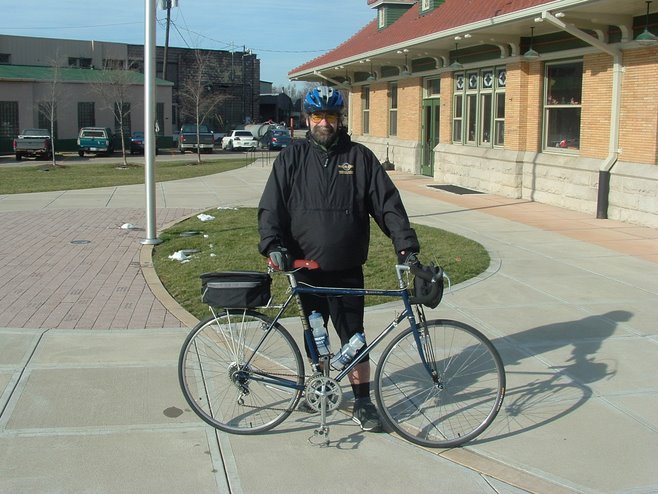Cross training is the best remedy for this, along with supplementation with Calciul. Calcium Citrate, by the way, is the most easily metabolizable form of Calcium for the body and intake needs to be around 1000-1500 mg a day.
The following is the press release on Dr Hintons study:
From: MU NEWS BUREAU
Sent: Monday, October 15, 2007 12:02 PM
Subject: Study Shows Some Athletic Men May Risk Low Bone Density
![]()
http://munews.missouri.edu/news-releases/2007/1015-hinton-osteopenia.php
Oct. 15, 2007 Contact: Pamela Hinton
Associate Professor
(573) 882-4137
Study Shows Some Athletic Men May Risk Low Bone Density
COLUMBIA, Mo. — According to the National Osteoporosis Foundation, osteoporosis affects more than 2 million men in the United States and nearly 12 million more have osteopenia—clinically significant low bone density that is less severe than osteoporosis. Now, a new study from the University of Missouri-Columbia has found that men engaging predominantly in low-impact forms of exercise have an increased incidence of osteopenia—a condition resulting in two times the risk of bone fracture.
"Unfortunately, some individuals who believe they are doing everything right in terms of their health might be surprised and upset by our finding," said Pamela Hinton, an associate professor of nutritional sciences in MU's College of Human Environmental Sciences, who co-authored the study. "We believe, however, that these results will ultimately serve as education and motivation for these people."
Hinton said the effects of osteopenia can be mitigated by integration of weight-bearing activities into the lifestyle of active individuals. Studies in pre- and post-menopausal women suggest that bone mineral density will increase 2 percent to 3 percent after six months of resistance training three times per week. Small changes in bone density translate into much larger changes in bone strength—a 1 percent increase in bone density reduces the risk of fracture by up to 5 percent.
"Regular, non-weight-bearing activities, such as swimming and cycling are effective measures for preventing the leading risk factors for death and disability in our society,” Hinton said. “But the results of this study suggest that regular weight-bearing activities, such as running, jogging, or rope jumping, are important for the maintenance of healthy bones."
The researchers measured bone mineral density in 43 competitive male cyclists and runners ages 20 to 59. Findings of the study included:
n The cyclists had significantly lower bone mineral density of the whole body, especially of the lumbar spine, compared to runners.
n 63 percent of the cyclists had osteopenia of the spine or hip compared with 19 percent of the runners.
n Cyclists were seven-times more likely to have osteopenia of the spine than the runners.
Background facts:
n The risk of fracture is increased approximately two-fold in osteopenic individuals and five-fold in people with osteopenia.
n Low bone density in males often remains undiagnosed and inadequately treated and, after suffering a fracture, men are less likely to receive follow-up care than women.
n Risk factors for osteoporosis in men are similar to those identified in women: family history, age, low body weight, smoking, excessive alcohol consumption, inadequate calcium or vitamin D intake, low reproductive hormone levels, physical inactivity, and disease or medication affecting bone metabolism.



3 comments:
I'll have to read up on that study to see what type of cyclists they looked at. It's been known for some time now that "elite" level cyclists have lower bone mass, and the mechanism is well understood also. During intense aerobic exercise, lactic acid buildup in the blood is counteracted by releasing bone calcium into the blood. For cyclists, you literally lose the calcium through sweat and urine, while in runners the 'microfractures' created in running causes the body to retain the calcium and repair the microdamage.
There's another recent study, however, showing that bone density is increased by subjecting the body to simple vibrations. This study suggested a solution for me: get a stiffer bike! :-)
Dumb question time: Did Dr. Hinton actually say supplemental calcium would help? I'm dubious, because the problem of osteopenia is not related to calcium intake.
Not a dumb question: Answer, in short, yes, it does help, especially as we age. More available calcium while crosstraining means faster recovery of bone density systemically. 1000-1500 mg is quite sufficient for this daily. It needs to be a Calcium Citrate rather than Calcium Carbonate as Citrate is the most metabolizable form. Vitamin D in combination also helps speed the Calcium uptake.
Post a Comment